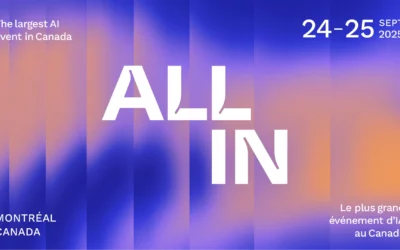Terry Peters, Canadien d’origine néo-zélandaise, diplômé en génie électrique de l’Université de Canterbury, a connu un parcours transformateur en thérapie guidée par imagerie au fil d’une carrière de plus de cinquante ans. Son récit se décline en une série de moments charnières et de percées décisives.
En 1971, Richard Bates, le mentor de Peters, a réorienté sa carrière du génie vers l’imagerie médicale. À l’époque, l’imagerie médicale reposait principalement sur la radiographie, inchangée depuis plus de 75 ans. Peters a été chargé de mesurer la densité osseuse et d’étudier la diffusion des ondes dans des milieux homogènes. Ce défi a ouvert la voie à ses travaux révolutionnaires qui ont mené à la découverte de la tomodensitométrie (TDM). Bien que son travail ait été initialement éclipsé par le scientifique britannique Godfrey Hounsfield, qui a reçu le prix Nobel pour ses travaux sur la TDM, Peters a persévéré, conscient du potentiel transformateur de ses découvertes.
« Nous avons connu une déception initiale, mais elle s’est rapidement estompée une fois que nous nous sommes rendu compte que nous avions entre les mains quelque chose qui pourrait changer la donne », explique Peters.
Le concept de découvertes multiples (lorsqu’une découverte est faite indépendamment et plus ou moins simultanément par plusieurs inventeurs) n’est pas un phénomène nouveau. Citons par exemple l’invention de la machine à vapeur et du téléphone. Peters et Hounsfield ont fini par se croiser au fil de leur carrière, s’inspirant et se mettant au défi l’un l’autre.
Lorsque Peters a présenté sa technologie de tomodensitométrie aux radiologues locaux, qui préféraient les radiographies traditionnelles, il s’est heurté à leur scepticisme. Sans se laisser décourager, Peters a travaillé avec un maigre budget pour mettre au point un tomodensitomètre rentable dans le même hôpital. Cette initiative a donné lieu à des publications et a incité les fabricants de tomodensitomètres à adopter l’une de ses innovations, ce qui a permis d’améliorer considérablement la résolution des appareils de l’époque. one of his innovations, resulting in significant resolution improvements to the machines of the time.
En 1975, alors qu’il est chargé par le gouvernement néo-zélandais de sélectionner le premier tomodensitomètre commercial pour le pays, Peters assiste à une conférence sur la TDM à l’Université Stanford. C’est là qu’il découvre l’imagerie par résonance magnétique (IRM), une technologie naissante présentée par Paul Lautebur, qui remportera plus tard un prix Nobel pour ses travaux dans le domaine. Peters a aussi rencontré Chris Thompson, compatriote néo-zélandais et scientifique, qui l’a invité à l’Institut neurologique de Montréal pour collaborer à l’avancement de la tomodensitométrie et de la tomographie par émission de positons (TEP). Pendant près de vingt ans, Peters a travaillé à Montréal avant qu’Aaron Fenster ne l’invite à installer son laboratoire au Robarts Research Institute de l’Université Western à London, en Ontario.
Dans le Laboratoire d’augmentation et de simulation virtuelles pour la chirurgie et la thérapie (VASST) du Robarts Research Institute de l’Université Western, Peters a relevé son projet le plus ambitieux : développer une technologie permettant de réparer les valvules mitrales à l’intérieur du cœur battant. Habituellement, pour la réparation d’une valvule mitrale, l’équipe de chirurgie doit arrêter le cœur et brancher la personne à une machine cœur-poumon pendant la procédure. Il s’agit d’une intervention extrêmement risquée qui requiert des spécialistes de très grande compétence.
« Ce projet a sans conteste été l’un des plus difficiles de ma carrière, déclare Peters. Opérer un cœur avec des mouvements irréguliers est probablement l’une des manœuvres les plus difficiles pour les spécialistes de la chirurgie cardiaque. Tout faux mouvement peut être fatal. »
Pour résoudre ce problème, l’équipe de Peters a créé un modèle de cœur en silicone qui reproduit le rythme naturel du cœur malade, permettant à l’équipe de chirurgie de mettre à l’épreuve les techniques de réparation sur le cœur en silicone battant avant l’intervention chirurgicale. Il a mis au point plusieurs prototypes avant que les modèles ne soient acquis par Archetype Biomedical, à London (Ontario), une entreprise dérivée de son laboratoire. Cette innovation s’est révélée essentielle pour arriver à mettre à l’essai de nouvelles technologies sans avoir recours à des modèles animaux, et pour permettre d’évaluer des valvules cardiaques modélisées dans des conditions proches de celles du monde réel.
La carrière remarquable de Peters a laissé une marque indélébile sur l’imagerie médicale. Ses premiers contacts avec l’imagerie médicale, par l’intermédiaire du professeur Bates, se sont avérés formateurs et ont poussé Peters à encourager ses propres étudiant·es à repousser les limites de ce qui est jugé possible. Grâce à plus de 300 publications évaluées par des pairs sur un vaste éventail de modalités d’imagerie, au mentorat de plus de 100 stagiaires et à sa passion pour la collaboration avec des équipes cliniques d’avant-garde, il continue à exercer un impact. Même à la soi-disant retraite, il consacre du temps à ses petits-enfants et retourne fréquemment au laboratoire pour soutenir et guider ses étudiant·es vers de nouvelles innovations et découvertes.
Terry Peters a soutenu un projet du fonds Pilote d’INOVAIT avec Northern Digital Inc. (NDI) sur la fluoroscopie à rayons X.

Cet article a été initialement publié dans le rapport d'étape 2020-2023 d'INOVAIT intitulé « Le secteur canadien de la thérapie guidée par l'image : soutenu par INOVAIT, en pleine croissance grâce à l'intelligence artificielle ». Ce rapport complet de 72 pages met en lumière les avancées significatives et l'impact des initiatives en cours au sein du secteur canadien de la thérapie guidée par l'image de 2020 à 2023. Il décrit les principales réalisations du secteur, notamment le développement de nouvelles technologies, une croissance économique et des gains importants, ainsi que la vigueur et la croissance globales de l'écosystème canadien de l'innovation en soins de santé. Vous pouvez télécharger une copie du rapport ici.




